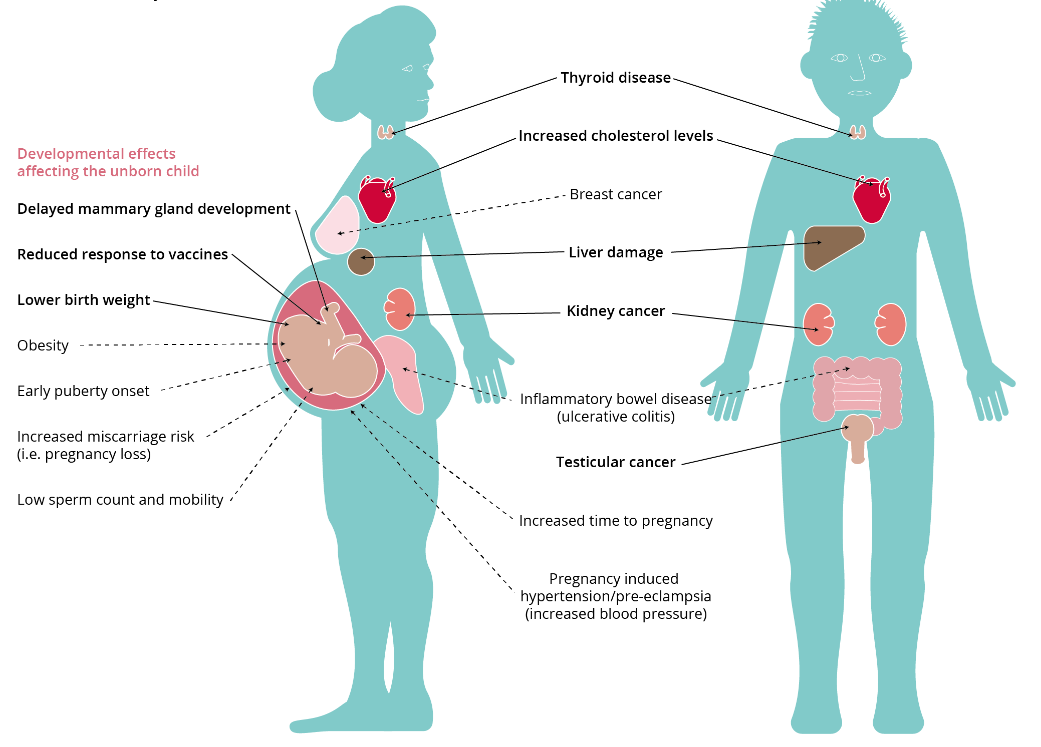What are the PFAS? #
PFAS stands for per- and poly-fluoroalkyl substances. #
They are a group of more than 12,000 compounds (types) of human-made chemicals (USGS, 2023). They are widely used in various industrial and consumer products. They are also called “forever chemicals” due to their unique properties, such as heat, water, and oil resistance. They persist in the environment; they do not break down and can accumulate in the human body over time.
The PFAS group includes thousands of individual chemical compounds, but the most well-known and studied ones are perfluorooctanoic acid (PFOA) and perfluorooctane sulfonate (PFOS).
USGS estimates that at least 45% of the nation’s tap water has one or more types of PFAS. In this study, the USGS study tested for 32 types out of the 12000; therefore, the actual number might be even higher.,
Additionally, in a recent risk assessment of PFAS in commercially available drinking straws (39 different brands) made of paper, bamboo, glass, stainless steel and plastic the results showed that PFAS were found in 69% of the products. The tests identified 18 different per- and poly-fluoroalkyl substances in low concentrations. These chemicals were found in 90% of paper straws, 80% of bamboo straws, 75% of plastic straws and 40% of glass products straws. In metal straws, no PFAS were found. (Boisacq et al., 2023)
How are humans exposed to PFAS? #
As mentioned above, these chemical compounds are widely used in various industrial and consumer products. Drinking water can be a source of exposure. Regarding the products, these compounds have been widely used in the production of non-stick coatings (e.g., Teflon), firefighting foams, stain-resistant fabrics, water repellents, food packaging, cream, and cosmetics, various textiles for furniture and outdoor clothing, pesticides or other pharmaceuticals, paints and others. Based on the European Environment Agency, at the moment, there is not enough information regarding which PFAS are used, in which applications, and at what levels.
For the general population, PFAS sources include drinking water, food, consumer products, and dust (EFSA, 2018). In food, fish species and shellfish are significant sources of PFAS exposure. Livestock raised on contaminated land can accumulate PFAS in their meat, milk, and eggs (). Direct exposure may also come via skin creams and cosmetics (Ingelido et al., 2018; Danish EPA, 2018) or air from sprays and dust from PFAS-coated textiles. Consumer exposure may also occur via other routes, such as floor, wood, stone, and car polishing and cleaning products. Groups that may be exposed to high concentrations of PFAS include workers and people eating or drinking water and foods contaminated via PFAS-treated food contact materials (Susmann et al., 2019).
Are PFAS harmful to humans? #
People most susceptible to negative health impacts are those with extensive PFAS exposure, particularly vulnerable groups like children and the elderly. Over time, both humans and animals accumulate PFAS in their systems. In 2018, the European Food Safety Authority (EFSA) re-evaluated the toxicities of PFOA and PFOS, resulting in notably lower provisional safety thresholds known as the ‘tolerable weekly intake’ (TWI) (EFSA, 2018). This assessment concluded that a significant portion of Europe’s population is expected to surpass the TWI due to PFAS consumption from food and water.
Recent research estimated annual health-related expenses of EUR 52-84 billion throughout Europe (Nordic Council of Ministers, 2019). It is important to note that these costs could be underestimated as the estimates encompass only a limited range of health issues (such as high cholesterol, weakened immune system, and cancer) linked to exposure to specific PFAS variants. Furthermore, PFAS contamination adversely affects ecosystems, leading to soil and water remediation expenses. Currently, assessing such costs proves challenging due to the absence of comprehensive information on the extent of PFAS-contaminated sites in Europe and the ecological impact of it.
Many animal laboratory studies show that high PFOA and PFOS concentrations can cause reproductive and developmental, liver and kidney, and immunological issues. Additionally, they can cause tumors. The most consistent findings based on human studies are increased cholesterol levels. Other studies show effects on infant birth weights, adverse effects on the immune system, cancer (for PFOA), and thyroid hormone effects (for PFOS).
Below, you can see some examples of PFAS in human health.

Figure 1: Effects on PFAS, Sources: European Environment Agency, US National Toxicology Program, (2016); C8 Health Project Reports, (2012); WHO IARC, (2017);
How can you avoid PFAS? #
Generally, it is difficult for consumers to avoid exposure to PFAS. One solution is using PFAS-free products and cooking materials. Another one is to avoid direct contact with PFAS-containing products, which helps to reduce exposure. Another solution is to use consumer products from green labels and buy brands free from PFAS. According to IDPH, regarding drinking water, PFAS can be removed by carbon filtration or reverse osmosis system.
References
National Institute of Environmental Health Sciences
IDPH, Illinois Department of Public Health.
EFSA, 2018, Risk to human health related to the presence of perfluorooctane sulfonic acid and perfluorooctanoic acid in food, accessed 2 December 2019.
Nordic Council of Ministers, 2019, The cost of inaction – A socioeconomic analysis of environmental and health impacts linked to exposure to PFAS, TemaNord No 516.
Ingelido, A. M., et al., 2018, ‘Biomonitoring of perfluorinated compounds in adults exposed to contaminated drinking water in the Veneto Region, Italy’, Environment International 110(October 2017), pp. 149-159 (DOI: 10.1016/j.envint.2017.10.026).
Danish EPA, 2018, Risk assessment of fluorinated substances in cosmetic products, Survey of chemical substances in consumer products No 169, accessed 2 December 2019.
Susmann, H. P., et al., 2019, ‘Dietary Habits Related to Food Packaging and Population Exposure to PFASs’, Environmental Health Perspectives 127(10), p. 107003 (DOI: 10.1289/EHP4092).
Boisacq Pauline , Maarten De Keuster, Els Prinsen, Yunsun Jeong, Lieven Bervoets, Marcel Eens, Adrian Covaci, Tim Willems & Thimo Groffen (2023) Assessment of poly- and perfluoroalkyl substances (PFAS) in commercially available drinking straws using targeted and suspect screening approaches, Food Additives & Contaminants: Part A, DOI: 10.1080/19440049.2023.2240908





